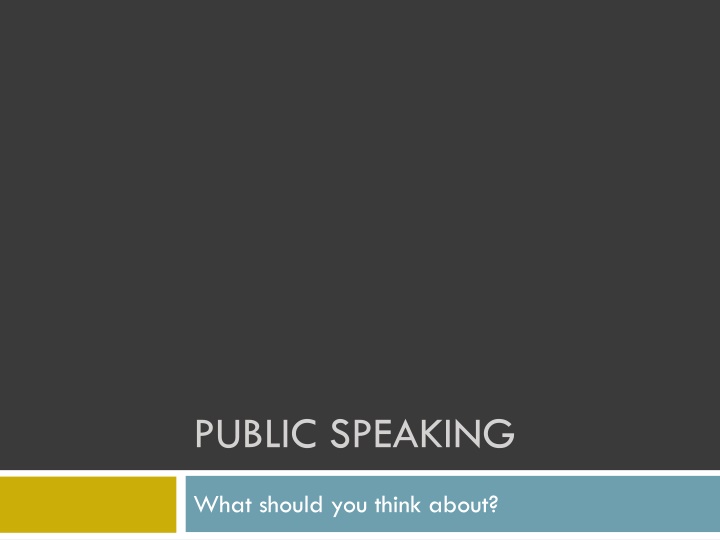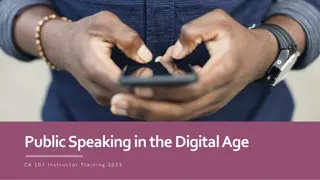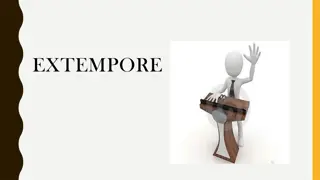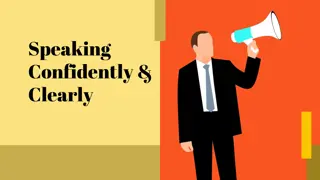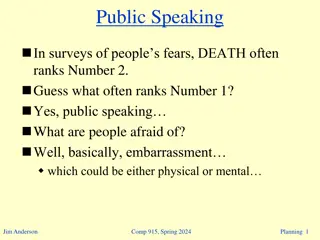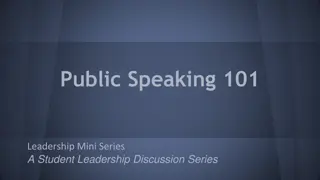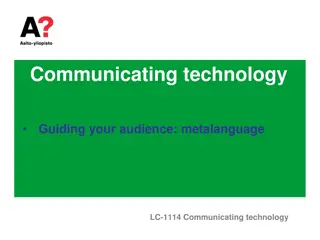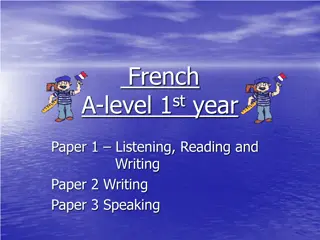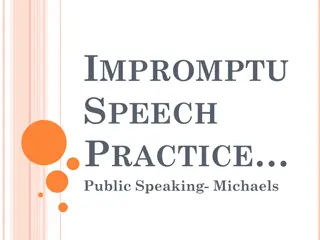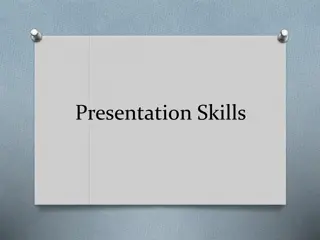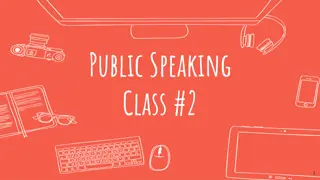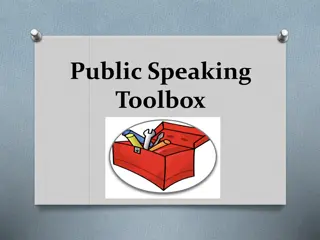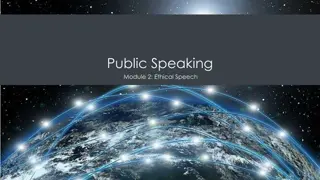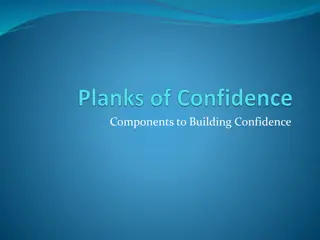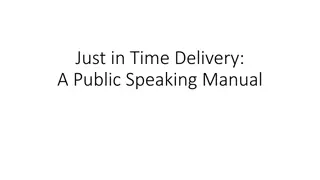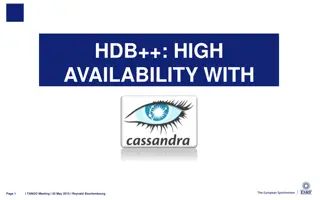Effective Public Speaking Techniques
Craft a compelling speech by following guidelines on structure, content, delivery, and engaging the audience. Learn about rules, regulations, and evaluation criteria for a successful presentation. Utilize the 3-part structure of introduction, body, and conclusion to deliver a memorable speech that resonates with your audience.
Download Presentation

Please find below an Image/Link to download the presentation.
The content on the website is provided AS IS for your information and personal use only. It may not be sold, licensed, or shared on other websites without obtaining consent from the author.If you encounter any issues during the download, it is possible that the publisher has removed the file from their server.
You are allowed to download the files provided on this website for personal or commercial use, subject to the condition that they are used lawfully. All files are the property of their respective owners.
The content on the website is provided AS IS for your information and personal use only. It may not be sold, licensed, or shared on other websites without obtaining consent from the author.
E N D
Presentation Transcript
PUBLIC SPEAKING What should you think about?
Rules & Regulation Theme: Future Speech is in English! Length: 4 minutes; 30 second leeway Answering of 3 questions Have a clear purpose (persuade, inform, entertain) Not allowed to read speech from paper May be provoking not never offensive Do not overdress Do make it overdramatic it s not theatre
No discussion possible about the judges decision No. 1 of school continues to regional round Jan/Feb No. 1 + 2 of regional continue to final Jan/Feb/Mar Final takes place in Amersfoort on 11 April 2012 Prizes for winners ( 100) and runners-up
Assessed on: National criteria Class criteria Content Structure Clarity Use of English Originality Contact with the audience Handling of questions General appearance, poise (calm/self-controlled), posture Material selection coherence/ unit, appropriate Voice volume, fluency, control Content Use of language Appropriate gestures & eye contact Response to questions
The 3 part structure Introduction: catching the audience s interest Introduce yourself Name, from which school, etc. Title An opening sentence Start with a question, startling fact/statistic, quotation, anecdote, reference to current event. A preview of your speech State topic of speech, indicate the structure of main points
Body Body: Presenting your information Present information as presented in introduction Use signposting (linking words) where are you? By incorporating transition and summarising phrases /sentences you give cohesion (united) to your speech You can include internal summaries: - To remind the audience of your point(s) made - To signal that you have concluded one part & are moving on to the next. BUT - don t over do it!!
Conclusion/Summary Conclusion: getting across your most important point(s) 10% of overall length Expressing your purpose (to buy your position, theory) No new information; but end with something of similar means (like in the introduction) Make it memorable not: Well that s it really! When you are done: Smile and say thank you
Examples of linking words These 2 links will help you with a range of different Linking Words which you should use in your speech. WHY? They create cohesion and illustrate how the parts of the speech relate/link to each other. We also call these words Signpost Words: firstly secondly thirdly lastly; first of all then next last (to show order of your speech). OTHERS WORDS/PRASES; we ve looked at, let me now turn to, on the other hand, now let s consider, if you think that s shocking, similarly, and yet, altogether, at present, for example, finally, in conclusion, to sum up, to finish up, etc. http://www.dlsweb.rmit.edu.au/lsu/content/4_WritingSkills/writing_pdf/Linking%20wor ds%20and%20phrases.pdf (first page only) http://www.ssdd.uce.ac.uk/learner/writingguides/1.33.htm
